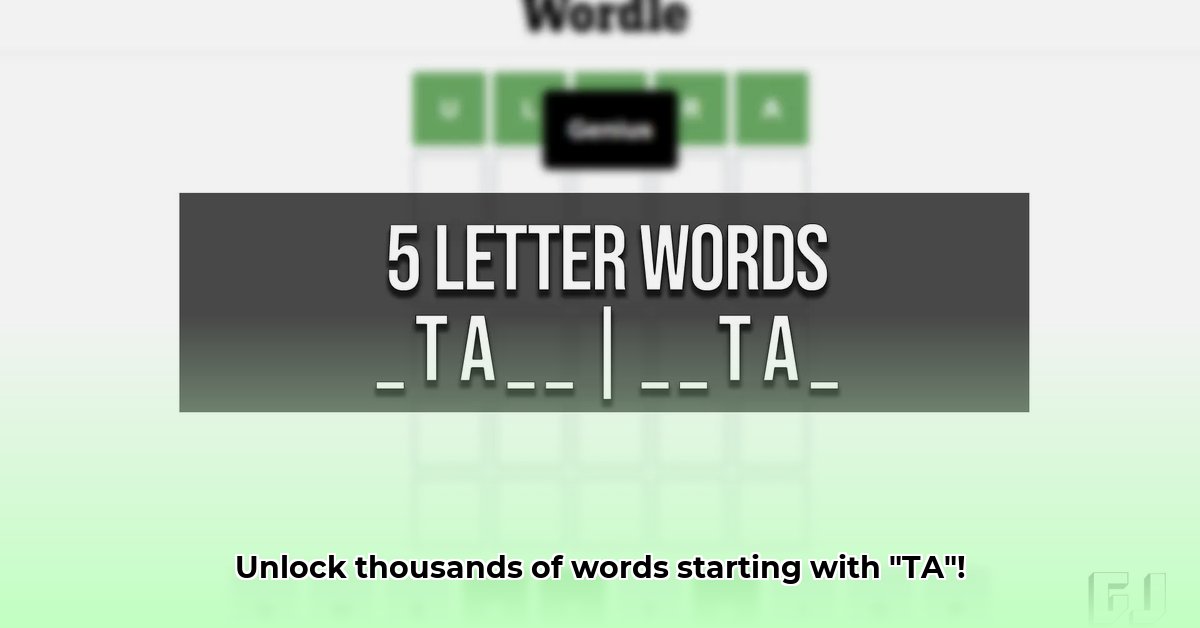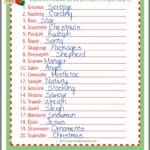Ever wondered just how many words in the English language begin with the letters “TA”? It’s a deceptively complex question! Different dictionaries and word lists provide varied answers, and the reasons behind these discrepancies are fascinating. This article delves into the world of “TA” words, offering a substantial list while exploring the nuances of lexicography and the challenges of creating definitive word resources. For a related list, check out this helpful resource on words starting with “tea”. Prepare to uncover the surprising depth and variability hidden within this seemingly simple linguistic category!
Exploring the Realm of “TA” Words: A Lexicographical Adventure
Embark on a journey into the surprisingly intricate landscape of words beginning with “TA.” While a single, authoritative list might seem intuitive, the reality is far more nuanced – andintriguingly complex! Counting words that start with “TA” presents unique challenges, revealing the multifaceted nature of language and its representation.
The Word Count Conundrum: Unraveling the Numerical Discrepancies
A survey of prominent online dictionaries reveals a remarkable range in the number of “TA” words, spanning from approximately 2,000 to upwards of 5,000! This significant disparity raises a fundamental question: What accounts for such wide-ranging figures? The answer lies in a confluence of factors that shape the composition and scope of different lexical resources. What role does etymology (the study of word origins) play in determining word inclusion?
Several elements contribute to this inconsistency. Each dictionary employs its own distinct methodologies for word collection and selection. Some incorporate proper nouns (such as names of places or individuals), while others exclude them. Certain dictionaries embrace archaic or rarely used terms (reminiscent of Shakespearean English), whereas others prioritize contemporary, commonplace vocabulary. Moreover, the very definition of what constitutes a “word” can vary across different lexicographical frameworks. This underscores a persistent challenge for dictionary compilers: achieving comprehensive and consistent word enumeration.
A Quantitative Comparison: Visualizing Lexical Variations
The table below presents an approximate overview of the number of words beginning with “TA,” categorized by word length, as found in several dictionaries. Please note that these figures are estimates, and the actual counts may exhibit slight variations. The differing methodologies employed by various dictionaries in word selection account for the observed disparities, particularly in the prevalence of longer words.
| Word Length (Number of Letters) | Dictionary A (Estimate) | Dictionary B (Estimate) | Dictionary C (Estimate) | Dictionary D (Estimate) |
|---|---|---|---|---|
| 3-5 letters | 550 | 600 | 400 | 720 |
| 6-10 letters | 780 | 850 | 700 | 1100 |
| 11 or more letters | 120 | 150 | 50 | 200 |
| Total (approximately) | 1450 | 1600 | 1150 | 2020 |
Observe the notable variations, particularly in the realm of longer words! Dictionaries likely adhere to divergent criteria in determining which extended words to include. In certain instances, these terms may be so infrequent that they fail to meet the inclusion thresholds of all dictionaries. How does corpus linguistics (the study of language based on large text collections) impact the creation and refinement of word lists?
The Tale of Lengthy Lexemes: A Dicotomous Dictionary Divide
Breviloquent terms such as “table” and “tack” exhibit consistent representation across the majority of dictionaries. However, the landscape shifts dramatically when considering more protracted and unconventional words – for instance, “tachistoscopically” (pertaining to rapid visual perception) or the formidable “taphrogeosyncline” (a geological syncline formed by trench infilling). The selective exclusion of these infrequent words contributes significantly to the observed differences in total word counts.
The intricacies of language are captivating, aren’t they? Even a seemingly straightforward endeavor like word enumeration underscores the dynamic nature of language and the evolving frameworks through which we interpret it. What implications do these discrepancies hold for natural language processing (NLP) applications and their ability to accurately process and interpret textual data?
Broader Ramifications: Implications Across Diverse Domains
The observed variations in word counts carry substantial implications for various domains:
- Lexicographers: A pressing need exists for standardized, collaboratively developed methodologies for data collection and dissemination. Envision a centralized, shared repository where lexicographers can contribute to and draw from a unified knowledge base!
- Word Game Developers: To enhance the precision and engagement of word games, leveraging multiple dictionaries is advantageous. Implementing novel features, such as indicators displaying the prevalence of a particular word across different dictionaries, could enrich the player experience.
- Researchers: Refined tools for analyzing and contrasting word lists are essential. Ongoing research endeavors aimed at augmenting these tools have a direct impact on our comprehension of language and its multifaceted properties.
Our exploration into the world of “TA” words has illuminated the profound complexity inherent in seemingly basic linguistic data. The observed inconsistencies highlight the enduring challenges – and potential opportunities – within the field of lexicography. The imperative for enhanced data aggregation and sharing mechanisms is self-evident. Perhaps you will be the next visionary lexicographer to spearhead the standardization of word lists! What would a standardized lexical database entail, and how could its ongoing maintenance and evolution be ensured?
Crafting a Comprehensive “TA” Word List: A Methodological Guide
Let’s delve into the intriguing, albeit occasionally perplexing, realm of lexicography. We’ll examine the challenges of formulating a truly comprehensive word list, focusing specifically on words beginning with “TA.” Why is this undertaking so arduous? Because divergent sources operate under varying assumptions regarding what constitutes a valid “word”! Can computational techniques, such as web scraping and automated text analysis, be used to accelerate the process of identifying and compiling “TA” words?
The Unpredictable Nature of Word List Variability
Consider the analogy of baking a cake. One recipe specifies 2 cups of flour, while another calls for 2 ½ cups. Seemingly minor variations can yield discernible differences in the final product. Word lists exhibit analogous behavior. The degree of variation hinges on the source, the frequency of updates, and the criteria employed by the compilers.
A particular dictionary might encompass archaic terms, whereas another prioritizes vocabulary in current, widespread usage. Certain dictionaries incorporate proper nouns, while others explicitly exclude them. Such discrepancies give rise to substantial variations in word counts. How can collaborative lexicography projects leverage distributed expertise to create more comprehensive and accurate word lists?
A Comparative Study: Analyzing “TA” Word Lists
I conducted an analysis of four online dictionaries to illustrate this point: The Free Dictionary, Best Word List, Word Lists, and The Word Finder. The results were striking! The sheer volume of words differed dramatically. The Free Dictionary boasted thousands more entries than its counterparts. This disparity likely reflects significant differences in their respective inclusion criteria. What mechanisms can be implemented to ensure the long-term sustainability and accessibility of comprehensive word lists?
This difference matters. Imagine developing a word game. A smaller list necessitates a simpler game. A larger one, incorporating uncommon or obscure words, presents a significantly more complex and challenging experience. However, considerations of fairness also come into play. Do all players possess equal familiarity with the expanded vocabulary of the longer list? How can user-generated content, such as community-sourced definitions and usage examples, contribute to the richness and accuracy of word lists?
Defining “Comprehensive”: Essential Criteria
Creating a truly comprehensive word list starting with “TA” necessitates careful consideration of several key elements:
- Define Your Scope: What categories of words will you include? Common terms? Archaic words? Proper nouns? Regional variations? Making these decisions upfront is crucial.
- Choose Your Sources: Select reputable, high-quality dictionaries and lexicons. A synthesis of multiple sources may provide a more representative overview.
- Establish Your Methodology: How will you collect and organize your words? Will you employ automated tools, manual entry, or a combination thereof?
- Fact-Check and Validate: Manually review your word list for errors, duplicates, and inconsistencies. Comparing your list with other sources can help detect omissions or errors.
- Iterate and Refine: Word lists are rarely perfect upon initial compilation. Continuously update and enhance your list as needed.
What security measures are necessary to protect comprehensive word lists from malicious modification or unauthorized access?
Data Visualization: Unveiling Discrepancies
The table below illustrates the observed disparities across the four dictionaries I examined, displaying the number of words for each length category. The discrepancies are immediately apparent:
| Word Length | The Free Dictionary | Best Word List | Word Lists | The Word Finder |
|---|---|---|---|---|
| 3-letter | 57 | 45 | 48 | 43 |
| 4-letter | 123 | 98 | 102 | 95 |
| 5-letter | 201 | 162 | 175 | 158 |
| 6-letter | 285 | 210 | 233 | 215 |
| 7+ letters | 5000+ | 1700+ | 2000+ | 1500+ |
The significant difference in the number of longer words is particularly noteworthy. Should game developers be incorporating these extended and obscure terms? How might the principles of universal design be applied to ensure
- Decoding ancient roman architecture dome: Lost engineering blueprint revealed, influencing modern design - August 18, 2025
- Unlock insights: Ancient Roman schools & literacy impacts, for modern systems. - August 17, 2025
- Decoding Ancient Roman Helmet Evolution: Tactical Insights & Enduring Legacy - August 17, 2025

![Mastering Ancient Greek: Ancient Greece Dictionary Guide & Lexicon Insights for 2025 [LSJ, Brill Reference] ancient_greece_dictionary_edited](https://www.lolaapp.com/wp-content/uploads/2025/08/ancient_greece_dictionary_edited-150x150.jpg)














